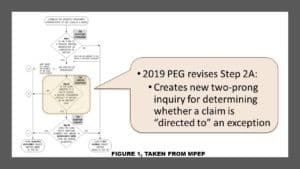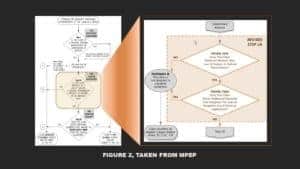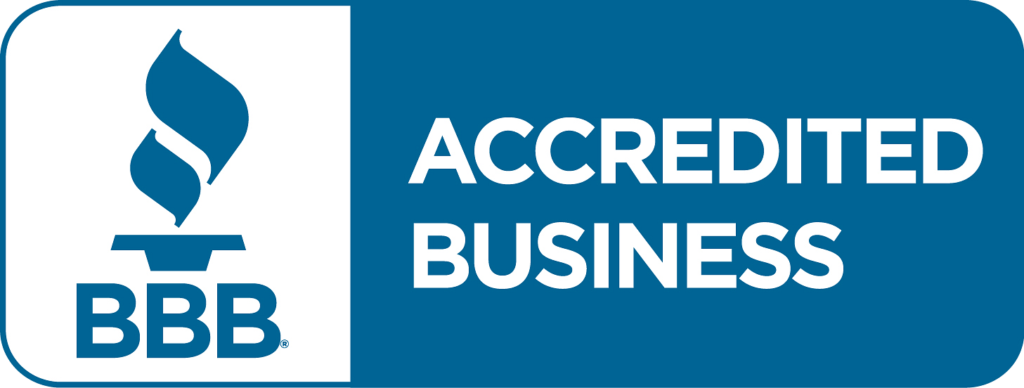In my previous blog entitled “Software Patents – Hurdles to getting a patent,” I explained the hurdles that you might encounter when you file a patent application to get a patent pertaining to software patents and computer-implemented inventions due to subject matter eligibility. These hurdles arose from case law, and I discussed the history and context of the overall patent system. In this blog, I discuss how to get a patent by circumventing subject matter eligibility rejections and show you how to get a patent for software patents.
The strategies to circumvent patent-ineligible subject matter under the Alice framework:
- You must know the U.S. Patent and Trademark Office’s test for determining whether a claim is patent-eligible under the Alice framework.
- I will explain how you can circumvent one or more steps of the Alice test and make your invention patent eligible.
- I will present a few other approaches to get around the patent-ineligibility issue to protect your invention better.
Software Patents- how to get a patent
Patent Office Guidance
In the absence of clarity by the courts, the USPTO issued guidance to Examiners to bring uniformity to rejections under section 101. The Alice decision did not define “abstract ideas” and did not clarify the meaning of “something more.” In a previous blog, I wrote about “something more” (read here), and below I discuss “abstract idea.”

MPEP revised the flowchart for determining subject matter eligibility.
According to the Patent Office guidance, Examiners must apply a two-step test revised to determine whether a claim meets subject matter eligibility. The test is as follows:
Step 1 (Statutory Categories): Is the claim to a process, machine, manufacture, or composition of matter?
- If not, the claim fails the test; it’s not patent-eligible (it’s not a valid claim under Section 101).
- If yes, go to Step 2A.
Step 2A (Judicial Exceptions): Is the claim directed to a law of nature, a natural phenomenon, or an abstract idea? (This “step” is a “two-prong inquiry.”)
- If not, the claim passes the test; it is patent-eligible (a valid claim under Section 101).
- If yes, go to Step 2B.
Step 2B (Inventive Concept): Does the claim recite additional elements that amount to significantly more than the judicial exception?
- If not, the claim fails the test; it’s not patent-eligible (it’s not a valid claim under Section 101).
- If yes, the claim passes the test; it is patent-eligible (it is a valid claim under Section 101).
This test is an improvement on the previous similar test and is a step in the right direction. On initial viewing, the process might sound very logical and straightforward. But still, when patent professionals and experts, including patent attorneys, judges, and examiners, apply this process to some real-world patent claims examples, they can get inconsistent results. Another way in which the USPTO guidance assists patent professionals is by defining what they mean by “abstract ideas” and “something more.” I will detail these definitions later in the article, but first, let me explain and analyze the test.

Let us analyze each step:
- Step 1 is straightforward. Suppose the claim recites a “method,” a “process,” a “system,” a “device,” an “apparatus,” a “computer-readable medium,” “structural elements,” or similar things. In that case, you may proceed to Steps 2A and 2B. If the claim does not recite these elements, the claim cannot meet 101 requirements. Steps 2A and 2B are where things can get complicated and tricky.
- Step 2 for software and computer-implemented inventions can pose a problem in determining whether the claim is “directed to an abstract idea” (at Step 2A). If yes, the next step (2B) will determine – whether the additional elements in the claim “amount to significantly more” than the abstract idea. Understanding these two issues is critical and is cause for confusion and controversy surrounding the Alice decision and its framework as it relates to software and computer-implemented inventions.
To address the concept of “abstract idea,” the U.S. patent office’s 2019 guidance provided and identified three general categories or groupings of abstract ideas from case law, 2106-Patent Subject Matter Eligibility.
- Mathematical concepts– mathematical relationships, mathematical formulas or equations, mathematical calculations.
- Certain methods of organizing human activity– fundamental economic principles or practices (including hedging, insurance, mitigating risk); commercial or legal interactions (including agreements in the form of contracts; legal obligations; advertising, marketing, or sales activities or behaviors; business relations); managing personal behavior or relationships or interactions between people (including social activities, teaching, and following rules or instructions); and
- Mental processes– concepts performed in the human mind (including observation, evaluation, judgment, and opinion).
Thus, in Step 2A, you must determine whether your claim is “directed to” one of these three types of abstract ideas. Step 2A answers this question with two “prong” inquiries:
• Prong One: Does the claim set forth or describe an abstract idea?
• Prong Two: Does the claim integrate the abstract idea into a practical application?
This 2A Prong Two excludes the well-understood, routine, conventional (WURC) consideration, part of step 2B. This exclusion is important because Step 2A excludes a review of WURC by the patent office Examiner; thus, a claim that includes WURC elements may still integrate an exception into a practical application.
In Step 2B, the question is: Does the claim recite additional elements that amount to significantly more than the abstract idea? To assess, you must analyze the “additional elements” in the claim, i.e., the elements that are not the abstract idea. These elements are analyzed to determine whether they define an “inventive concept.” Be mindful that the “inventive concept” here is in the context of patent eligibility under Section 101 and is unrelated to whether the claim is sufficiently innovative. These questions are dealt with as “novelty” and “non-obviousness” under Sections 102 and 103 of the patent statute.
Instead, the “inventive concept” analysis at Step 2B is done by determining whether the additional elements of the claim amount to “significantly more”. Although, this may appear like the analysis in Step 2A, which determines whether the claim integrates the abstract idea into a practical application. Even the patent office acknowledged that Steps 2A and 2B overlap strongly. For example, the MPEP states: “Although the conclusion of whether a claim is eligible at Step 2B requires that all relevant considerations be evaluated, most of these considerations were already evaluated in Step 2A Prong Two.”
Still, steps 2A and 2B are certainly not identical. For example, as mentioned before, in Step 2B, the Examiner may determine that the additional elements in your claim define only WURC, which is not considered at Step 2A. This does have a benefit. The types of claim limitations that can make a claim patent-eligible under Prong 2 of Step 2A can also be used for patent eligibility in Step 2B. Thus, you have two opportunities for getting patent eligibility. Therefore, if, at the end of Step 2B, the additional elements in the claim amount to significantly more than the abstract idea, the claim passes the test and should not be rejected as an ineligible abstract idea.
How to get a patent by circumventing 101 for software patent
Avoid abstract idea recitation as a claim element
If you do not recite an abstract idea in the claim, you can evade the test at the 2A step. Therefore, one of the best ways to get around section 101 rejection is to avoid recitation of an abstract idea, such as a mathematical concept, a method of organizing human activity, or a mental process (one of the three categories of abstract ideas identified in the patent office guidance). Then your claim will pass the test and be the patent-eligible subject matter.
In real-world situations, it may not be possible to circumvent 101 rejections by not mentioning what is considered an abstract idea in a claim. For example, frequently, if you need to claim an invention accurately, you must recite an abstract idea, such as a mathematical equation or correlation, in the claim. Avoiding using an abstract idea in the claim is not available in that scenario.
Where you must recite an abstract idea, you can go to Prong two because, per the USPTO guidance, if a claim sets forth an abstract concept, it doesn’t automatically mean that the claim is “directed to” the abstract idea. So you don’t fail the test at Prong One; instead, continue to Prong Two.
Incorporate Practical Application
In Step 2A, if the claim recites the abstract idea and incorporates practical applications, the claim is considered patent subject matter eligible. You can, therefore, integrate a practical application into the claim if your claim must include an abstract idea. By doing this, you can still circumvent the Alice framework by integrating a mathematical formula (or another abstract idea) into a practical application.
As you can appreciate, patent examiners will reject claims that do not fall within one of these four categories. However, one must consider a claim with all its elements and as a whole; for instance, data and software do not fall into one of these four categories; thus, they can be considered abstract. Yet when you claim data or software as residing on a physical computer, it is regarded as a machine under Section 101. A computer is a machine that does not become less of a machine even though it contains software or data. Hence, something more here is the computer machine.
Although there is no clear rule for whether a practical application is integrated into a claim reciting an abstract idea, the claim should mostly apply or use the abstract idea in some meaningful way beyond generally combining the abstract idea to a particular technological environment.
Notably, the Manual of Patent Examining Practices (MPEP) provides some valuable examples. The following are examples, from the MPEP, of claim limitations that can, in the context of software or computer-implemented invention, integrate an abstract idea into a practical application, i.e., limitations that are “significantly more:”
- Providing an improvement in the functioning of a computer or other technology, MPEP 2106.05(a).
- Implementing the abstract idea in conjunction with a particular machine or manufacture integral to the claim, MPEP 2106.05(b).
- Effecting a transformation or reduction of a particular article to a different state or thing, MPEP 2106.05(c).
These three examples provide ways to evade and circumvent the Alice framework and get a patent-eligible claim, i.e., you have three more tactics to get around 101 rejections, where you can pass the test and exit the Alice framework.
If your claim describes a system or process with any of these three attributes, then your claim is not “directed to” an abstract idea. For example, suppose your claim describes an invention related to a functional improvement of the computer (or another technology). In that case, your claim satisfies the criteria of Step 2A, and your claim should not be rejected as an ineligible abstract idea.
The MPEP provides examples of claim limitations that do NOT integrate an abstract idea into a practical application. In the Alice framework, these are meaningless additions that don’t assist in avoiding 101 rejections. Furthermore, these limitations do not provide any significantly more elements but are considered well-understood, routine, and conventional for software and computer-implemented inventions:
- Merely reciting the words “apply it” (or an equivalent) with the abstract idea, MPEP 2106.05(f).
- Merely including instructions to implement the abstract idea on a computer, or merely using a computer to perform the abstract idea, MPEP 2106.05(f).
- Adding insignificant extra-solution activity to the abstract idea, MPEP 2106.05(f).
- Generally linking the abstract idea to a particular technological environment or field of use, MPEP 2106.05(h).
Therefore, if your claim describes a system or process with nothing more than an abstract idea coupled with one of these four worthless additions, your claim is “directed to” the abstract idea, and your claim will get rejected under the 101 section.
Claim significantly more
During an analysis of the inventive concept in Step 2B, if the claim recites the abstract idea and integrates “significantly more,” the claim is considered patent subject matter eligible. You can, therefore, combine “significantly more” elements into the claim if your claim must include an abstract idea without a practical application at step 2A. By doing this, you can still circumvent the Alice framework by adding an abstract idea, for example, a mathematical relationship (or another abstract idea) with “significantly more.”
Step 2B (Inventive Concept) requires one or more elements of the claim to be “significantly more.” However, as I explained in my previous article, the “significantly more” remained unexplained by the Court decisions. Thus, the question remains:
What amounts to significantly more than an abstract idea?
The patent office has provided examples to determine what is considered and is not “significantly more.”
Limitations that are “significantly more” and are indicative of an inventive concept:
- Improvements to the functioning of a computer, or any other technology or technical field – see MPEP 2106.05(a)
- Applying the judicial exception with, or by use of, a particular machine – see MPEP 2106.05(b)
- Effecting a transformation or reduction of a particular article to a different state or thing – see MPEP 2106.05(c)
- Applying or using the judicial exception in some other meaningful way beyond generally linking the use of the judicial exception to a particular technological environment, such that the claim is more than a drafting effort designed to monopolize the exception – see MPEP 2106.05(e) and Vanda memo.
- Adding a specific limitation other than what is a well-understood, routine, conventional activity in the field – see MPEP 2106.05(d)
Limitations that are not “significantly more” and are not indicative of an inventive concept: - Adding the words “apply it” (or an equivalent) with the judicial exception, or mere instructions to implement an abstract idea on a computer, or merely using a computer as a tool to perform an abstract idea – see MPEP 2106.05(f)
- Adding insignificant extra-solution activity to the judicial exception – see MPEP 2106.05(g)
- Generally linking the use of the judicial exception to a particular technological environment or field of use – see MPEP 2106.05(h)
- Simply appending well-understood, routine, conventional activities previously known to the industry, specified at a high level of generality, to the judicial exception – see MPEP 2106.05(d) and Berkheimer memo.
Technical problem-solution approach
In view of post-Alice Federal Circuit case law, Gugliuzza, Paul. “The Procedure of Patent Eligibility.”
“a claim is not directed to an abstract idea if it includes at least one element that is a specific, technical improvement that is not found in the prior art.”
Many software patents and applications have been invalidated or rejected for being too abstract, so it is important to list the technical solutions that your invention provides to one or more technical problems. A claim must recite a combination of technical features with a technical effect. The linkage between the technical features and the effect is important and distinguishes claims directed to abstractions from practical inventions. If possible, describe how the software, via the hardware, provides one or more technical solutions to one or more technical problems. Generally, the more technical, the better, and if you can use any new hardware pieces along with your software, that will improve your odds of a patent grant. Also, a detailed explanation of an invention’s technical character in the specification may be helpful during prosecution.
Often, it may be easiest to provide an overview flow chart detailing the software logic from a broad, all-inclusive, and comprehensive perspective. Additionally, provide one or more flow charts that describe how every step from the overview flow chart is performed.
Another aspect is specificity, which means whether the claims recite an outcome or how to achieve that outcome. Purely outcome-oriented claims often appear functional, indicating what the invention provides rather than how it provides the function. These claims can be covered in the means-plus-function claim type. However, these claims offer a narrower scope. Therefore, claiming “how” the invention accomplishes a function and claims this is often better but not always possible.
Specificity can be recited in a claim in about five ways, which are not the same. For example, a claim recites a specific function of a specific element that does something in a specific way to obtain a specific result and thus solve a specific problem. Not all these specificities need to be included in each claim. But the more of these specificities you include in a claim, the more likely the claim will survive an eligibility challenge. Conversely, the fewer specificities in the claim, the more likely it will be found abstract. You must clearly understand that these specificities are not the same as the claim language in the definiteness, enablement, and written description requirements of § 112. Still, one aspect of post-Alice case law is that the § 101 test has evolved to take on characteristics from the § 112 tests.
Claim functionality of the software
In legal language, these claims are referred to as means-plus-function claims. This approach will assist you in circumventing the subject matter eligibility requirement, but you must be careful to avoid indefinite rejections when claiming functionality.
What is a Means-plus-function claim?
Section 35 U.S.C. § 112(f) states the requirement of means plus function claims, which states:
“An element in a claim for a combination may be expressed as a means or step for performing a specified function without the recital of structure, material, or acts in support thereof, and such claim shall be construed to cover the corresponding structure, material, or acts described in the specification and equivalents thereof.”
You will get an indefinite rejection if such structural details are absent from the specification. Thus, to circumvent the indefiniteness requirement, you must include varying levels of structure in both the specification and the claims (see hardware architecture). You must describe as many specific structures and algorithms as possible corresponding to means-plus-function claim elements in the specification. A detailed specification will assist you in avoiding indefinite rejections and broadening your claim scope.
Hardware architecture
Claims with the broadest scope are that claim hardware architecture. Thus, when possible, it is a sound idea to discuss a hardware architecture that the software can operate on and at least one or more flow charts that describe the steps or processes that the software performs to provide the functions of the invention to a user.
The description of the physical components or hardware architecture is important because it ties the steps and processes to be performed to tangible elements. Therefore, software patent claim construction may include structures. For example, the structural features include network, managing interface, operation interfaces, computing devices, data storage devices, monitoring modules, connection status data, time records, alarming devices, notifying messages, and analyzing modules.
Graphical user interface (GUI) design patent
The graphical user interface is an important aspect of software and computer-implemented invention because the user experience is linked to the GUI of software. Therefore, a good design can translate into an excellent user experience. As a result, many software product innovators craft highly user-friendly and aesthetically pleasing. Since this design is an integral part of your software intellectual property portfolio, protecting it with a design patent may be useful. However, be mindful of two facts; firstly, the design patent is not a replacement for a utility patent but an additional protective tool for the GUI design of your software inventions. Secondly, the design patent is solely for ornamental design, not the invention’s functionality and structure. Thus, if a particular design contributes to the invention function, you cannot get a patent. Fundamentally, the ornamental aspect of the GUI must be entirely separate and non-dependent on the functionality of the GUI.
Takeaway
Briefly, the test has three parts:
(1) does the claimed invention fall into one of the four statutory categories of patents eligible subject matter (process, machine, manufacture, or composition of matter).
(2) if yes, is the claimed invention directed to an abstract idea; and
(3) if yes, is there enough non-abstract invention that may contain an abstract idea, but if it includes “significantly more,” it can still be eligible for patent protection?
To determine whether a particular invention is patent subject matter eligible, it’s important to understand how the USPTO interprets and applies the Alice Framework. Besides circumventing the Alice framework, you must include information in the specification and claims for the technical problem-solution approach. The technical-solution style must recite at least one of the specific functions of a specific element that does something in a specific way to obtain a specific result and thus solve a specific problem. Additionally, you should include in your specification and claims the functionality of your software for the means-plus-function claims and hardware architecture. Finally, your GUI can be protected through a separate and independent GUI design patent.
Contact us for your initial free consultation
Getting a software patent is complex and time-consuming, so you must have all the necessary information and materials before you begin. Consult with a software patent attorney or patent agent to discuss your options and make sure you understand the requirements for patenting your product. Once you’re ready to file a patent, hire a patent attorney or patent agent to do the drafting and filing for you. This will save you time and money in the long run. Contact us for your free initial consultation.





